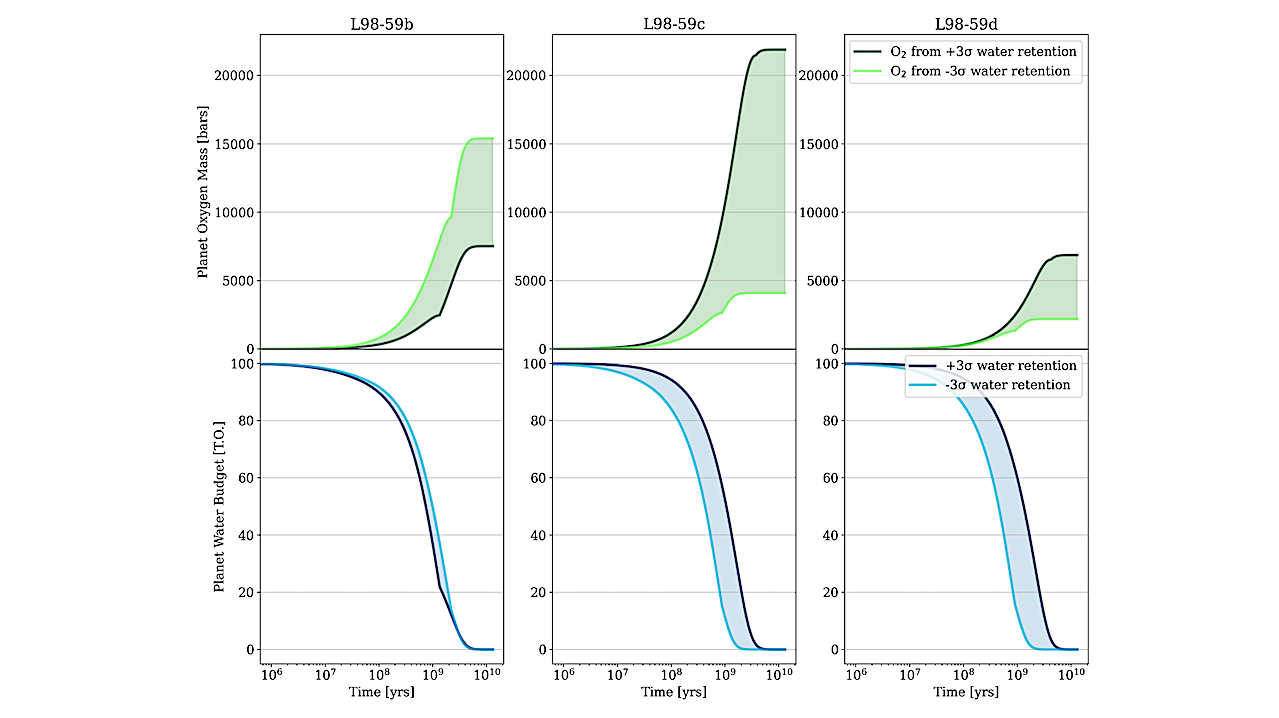Atmospheric Escape From Three Terrestrial Planets In The L 98-59 System

A critically important process affecting the climate evolution and potential habitability of an exoplanet is atmospheric escape, in which high-energy radiation from a star drives the escape of hydrogen atoms and other light elements from a planet’s atmosphere.
L 98-59 is a benchmark system for studying such atmospheric processes, with three transiting terrestrial-size planets receiving Venus-like instellations (4-25 S⊕) from their M3 host star. We use the VPLanet model to simulate the evolution of the L 98-59 system and the atmospheric escape of its inner three small planets, given different assumed initial water quantities. We find that, regardless of their initial water content, all three planets accumulate significant quantities of oxygen due to efficient water photolysis and hydrogen loss.
All three planets also receive enough XUV flux to drive rapid water loss, which considerably affects their developing climates and atmospheres. Even in scenarios of low initial water content, our results suggest that the James Webb Space Telescope (JWST) will be sensitive to observations of retained oxygen on the L 98-59 planets in its future scheduled observations, with planets b and c being the most likely targets to possess an extended atmosphere.
Our results constrain the atmospheric evolution of these small rocky planets, and they provide context for current and future observations of the L 98-59 system to generalize our understanding of multi-terrestrial planet systems.
Emeline F. Fromont, John P. Ahlers, Laura N. R. do Amaral, Rory Barnes, Emily A. Gilbert, Elisa V. Quintana, Sarah Peacock, Thomas Barclay, Allison Youngblood
Comments: 17 pages, 7 figures, accepted for publication in the Astrophysical Journal
Subjects: Earth and Planetary Astrophysics (astro-ph.EP)
Cite as: arXiv:2312.00062 [astro-ph.EP] (or arXiv:2312.00062v1 [astro-ph.EP] for this version)
Submission history
From: Emeline Fromont
[v1] Wed, 29 Nov 2023 19:00:00 UTC (1,493 KB)
https://arxiv.org/abs/2312.00062
Astrobiology








